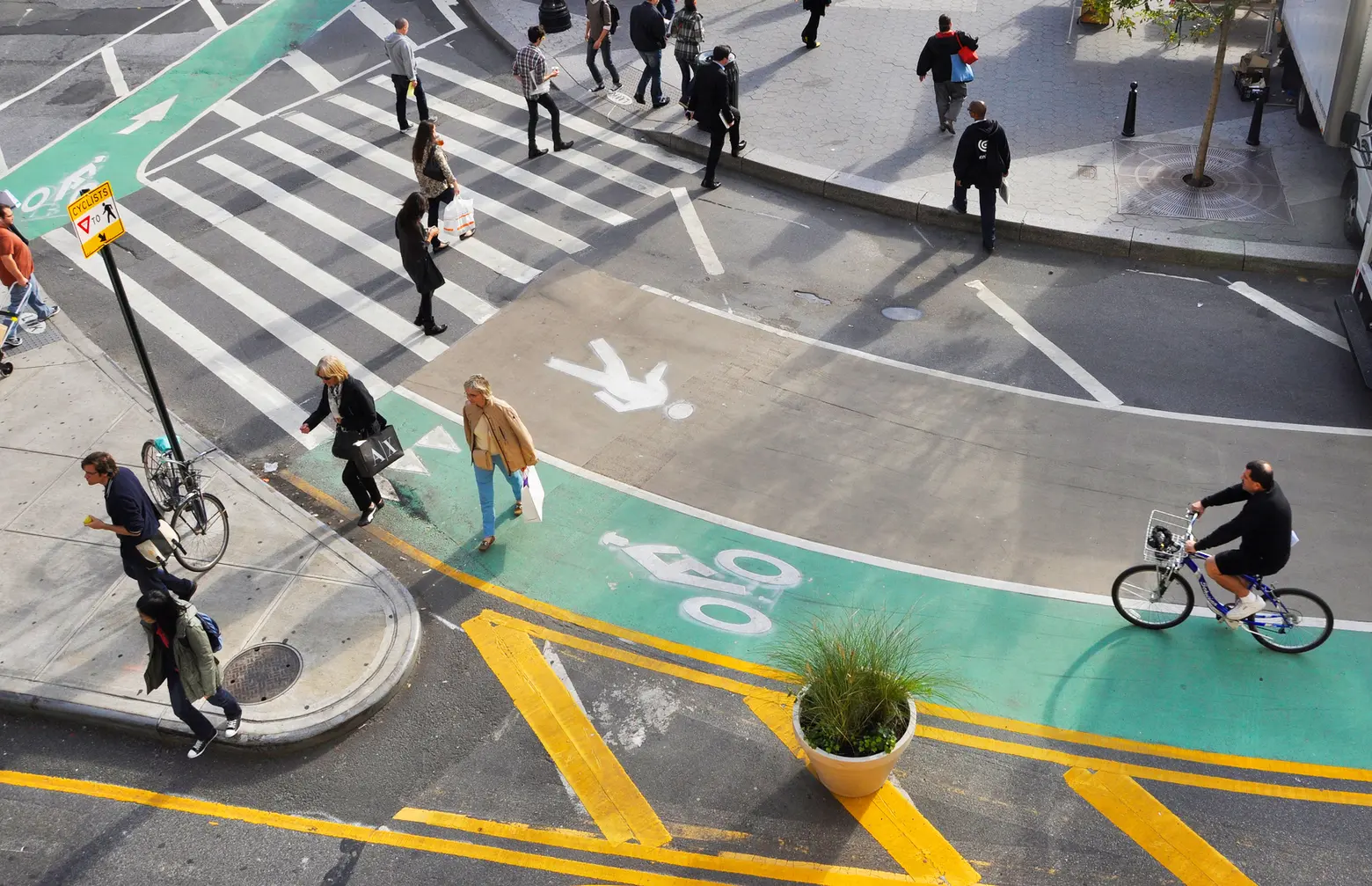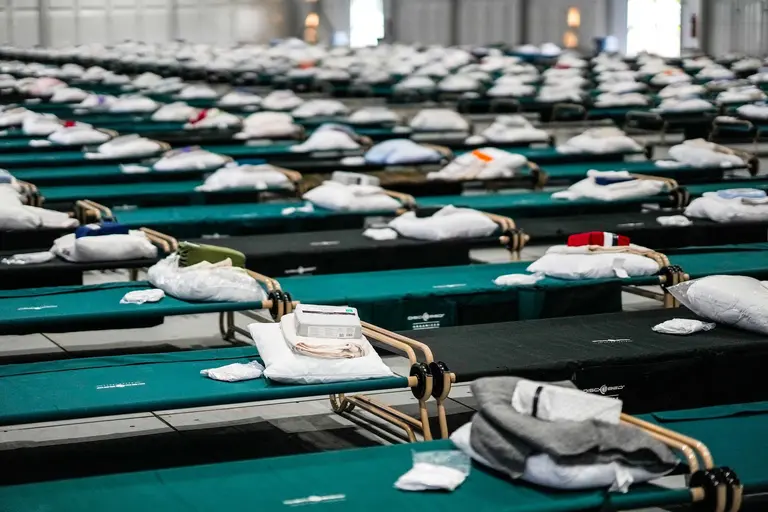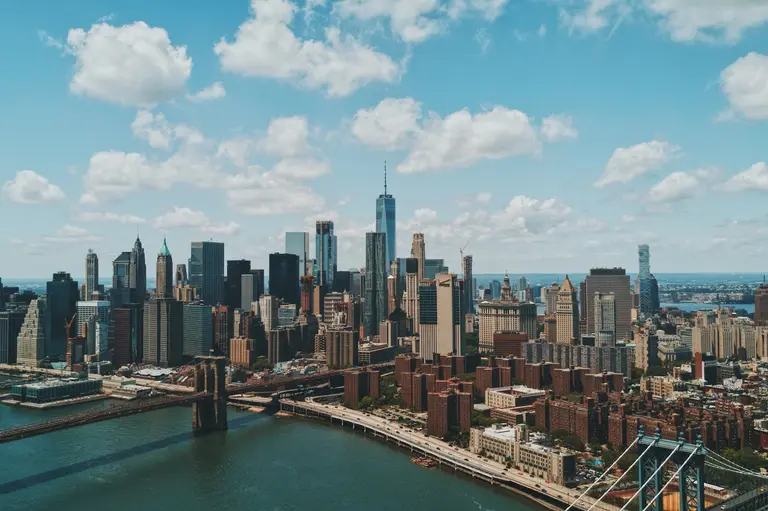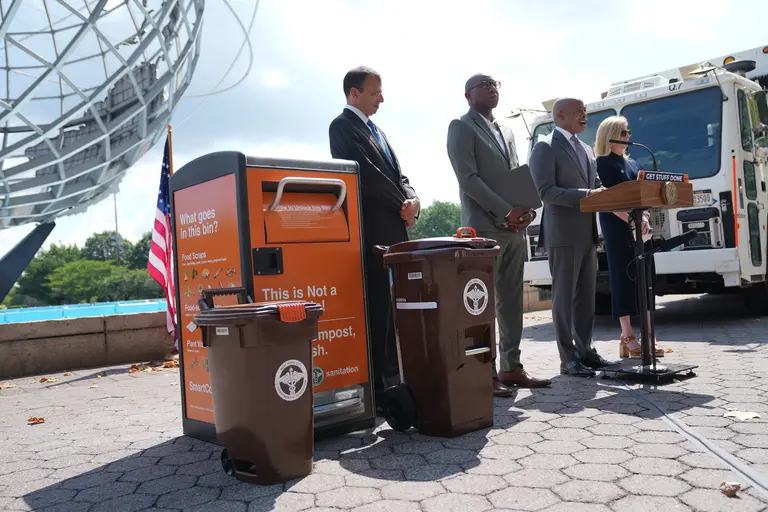Ranking the city’s most dangerous intersections for NYC cyclists

Image via Flickr
Just days after Mayor de Blasio unveiled a new plan to make the city’s streets safer for cyclists, another fatal accident occurred when a 30-year-old cyclist was struck near the intersection of Third Avenue and 36th Street in Sunset Park around 9 a.m. this morning. As Streetsblog reported, the incident brings the year’s death toll up to 18—nearly double what it was all of last year. Redesigning intersections is a component of De Blasio’s new $58 million initiative, which says it will ramp up NYPD enforcement at the 100 most crash-prone intersections and renovate 50 intersections. While the Department of Transportation hasn’t yet disclosed what those intersections will be, home-search platform Localize.city has created a list of the top ten most dangerous intersections for cyclists.
“Experts and the city already know where the dangerous intersections are and what makes them so unsafe. Our job at Localize.city is to ensure all New Yorkers are informed,” says urban planner Sam Sklar, who works at Localize.city. “If you’re thinking about taking up cycling you should know if the intersections and streets near your home are dangerous. If you’re moving and cycling is important to you, we want you to find a home that will be safe to cycle to and from.”
The company’s team of data scientists and urban planners has evaluated the relative safety of each intersection based on the number of bicycle injuries and fatalities over a five-year period, from 2014 through 2018. Two recent cycling fatalities occurred at intersections considered to be among the most dangerous for NYC cyclists, one in Chelsea and one in Staten Island, according to the analysis. Their top ten, listed below, were all locations in Manhattan and Brooklyn.
1. 6th Avenue & West 23rd Street, Chelsea, Manhattan – 21 Injuries
“Twenty-third street is wider than streets parallel to it, and it’s the main east-west route for delivery vehicles,” says Sklar. “This multiplies the risks. While not reflected in our data from 2014 to 2018, this intersection was the location of a fatal crash between a cyclist and a truck driver just last month.”
2. (Tied) Jay Street & Tillary Street, Downtown Brooklyn, Brooklyn – 20 injuries
“This is a crowded intersection along a key route for people cycling over the Manhattan or Brooklyn bridges. While some bike lanes are marked, such a major bike route needs to be protected with better-marked lanes,” says urban planner Dan Levine.
2. (Tied) Atlantic Avenue & Bedford Avenue, Crown Heights, Brooklyn – 20 injuries
“The bike lane on Bedford Avenue is not separated from traffic and is wedged between car-travel lanes. It’s unprotected on either side, and as riders cross the six-lane Atlantic Avenue, they’re expected to maneuver toward the curb. But often cars in a left turn lane actually turn back into traffic, creating a risk for cyclists,” says Sklar.
4. 3rd Avenue & East 14th Street, East Village, Manhattan – 18 injuries
“New bike lanes along East 12th and East 13th Streets should offer a safer route, at least for cycling crosstown. Even with bike lanes on neighboring streets and avenues, the high number of crashes shows this is a route many riders are travelling,” says Levine.
5. (Tied) Chrystie Street & Delancey Street, Lower East Side, Manhattan – 17 injuries
“Chrystie Street has a two-way bike lane, and the lane closest to traffic rides against traffic flow, which is a huge design flaw,” says Sklar. “It doesn’t help that Delancey Street is extremely wide, as it accommodates car and bus travel to and from the Williamsburg Bridge. Additionally, there isn’t currently any bike lane on this stretch of Delancey Street.”
5. (Tied) St. Nicholas Avenue & W. 141st Street, Harlem, Manhattan – 17 injuries
“As one of the few places where a crosstown street crosses St. Nicholas Avenue, this intersection likely sees more turning cars and trucks, which can be especially dangerous for people on bikes. Bollards and better-marked crossings could help turning drivers see riders,” says Levine.
7. (Tied) Allen Street & East Houston Street, Lower East Side, Manhattan – 14 injuries
“Cyclists and drivers approaching this intersection often have obstructed views because of the width of East Houston Street, plus the width of East First Street along with obstructed views from street trees and bus traffic that potentially blocks views for drivers and cyclists,” says Sklar
7. (Tied) Graham Avenue & Grand Street, Williamsburg, Brooklyn – 14 injuries
“On narrow, crowded, business-lined Grand Street, riders contend with double-parked cars and trucks and blocked bike lanes,” Levine says
7. (Tied) Jay Street & Myrtle Avenue, Downtown Brooklyn, Brooklyn – 14 injuries
A bike lane was added in 2016 to help shore up the commuter route along Jay Street. It is physically separated from the auto traffic and is wider than a typical bike lane,” Sklar says, “ though buses do use the bike lanes, too.”
7. (Tied) Roebling Street & South 4th Street, Williamsburg, Brooklyn – 13 injuries, 1 death
“Before 2017, the biking expressway over the Williamsburg Bridge ended at this chaotic intersection with poorly marked and inadequate bike lanes,” Levine says. “New protected lanes feeding to the bridge should make the route safer.”
The most dangerous intersection in each of the other boroughs was as follows:
Queens: 58th Street & Roosevelt Avenue, Woodside – 12 injuries; tied for 14th most dangerous intersection in the city
“There’s no bike lane along either Roosevelt Avenue or 58th Street. Plus, traffic from Woodside Avenue connects with this intersection. That adds in a wildcard element that makes traffic unpredictable,” Sklar says.
Bronx: (Tie) East 149th Street & Morris Avenue and East 161st Street & Morris Avenue, both in Melrose – both have seen 11 injuries and also tie for 16th overall in the city
“There are no bike lanes on Morris Avenue or any nearby parallel avenues. People on bikes are forced to fight through chaotic traffic to get to the businesses, schools, and apartments along this street,” Levine says.
Staten Island: Castleton Avenue & Clove Road, Port Richmond – 3 injuries, 97th most dangerous
“This intersection is the site of a recent fatality this month. The city clearly encourages Clove Road as a bike route because the way the street is painted to allow bikes and cars to share the lanes in either direction. But this lane isn’t separated or protected. It’s a shared lane,” says Sklar.
As Streetsblog reported, it’s important to note that a huge number of this year’s fatal accidents—13 of 18—took place in Brooklyn.
Last Thursday, Mayor de Blasio revealed his “Green Wave” plan, which includes spending $58.4 million over the next five years on making city streets safer for bikers. In addition to adding more protected bike lanes and redesigning intersections, the plan calls for a media campaign on cyclist safety, as well as community engagement programs.
RELATED:
- De Blasio to announce $58.4M bike safety plan after uptick in cyclist deaths
- Protected bike lane coming to Central Park West after community board approval
- Hudson Street’s transformation to a ‘grand allée’ with wide sidewalks and bike lanes progresses
- City Council Speaker Corey Johnson’s new bill is a ‘roadmap to breaking the car culture’




























